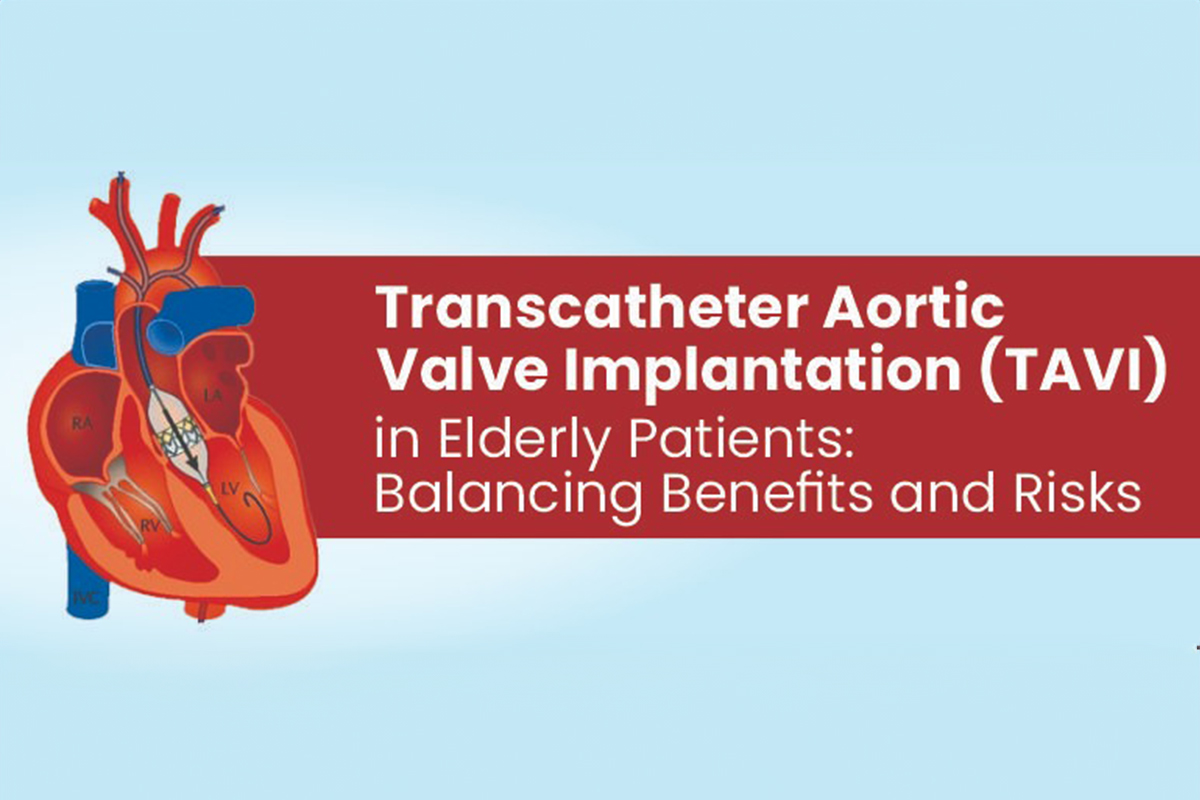
TAVI in High-Risk Patients: Providing a Safer Option
By Dr. Sameer Gupta in Cardiology Interventional Cardiology
Sep 11, 2023
Transcatheter Aortic Valve Implantation (TAVI) has emerged as a transformative treatment for aortic stenosis, particularly in high-risk patients unsuitable for Surgical Aortic Valve Replacement (SAVR). This minimally invasive procedure provides a safer option for individuals facing severe aortic stenosis and high surgical risks. This article explores the significance of TAVI in high-risk patients and the benefits it brings to this patient population.
Also Read: Who is a Candidate for TAVI? Patient Selection Criteria
Understanding Aortic Stenosis and Its Impact
Aortic stenosis is a condition where the aortic valve, responsible for regulating blood flow from the heart to the rest of the body, becomes narrowed or obstructed. This leads to increased pressure in the heart, reduced blood flow, and various symptoms, including chest pain, shortness of breath, and fatigue. Left untreated, severe aortic stenosis can result in heart failure and decreased life expectancy.
TAVI: A Revolutionary Approach
- TAVI is a revolutionary procedure that has redefined the treatment landscape for aortic stenosis, especially for high-risk patients. Unlike traditional open-heart surgery (SAVR), TAVI involves the insertion of a prosthetic valve through a catheter, usually via the femoral artery in the groin. This minimally invasive approach offers several key advantages:
- Also Read: What is TAVI? What are its Benefits?
- Reduced Surgical Risk: High-risk patients, often characterized by advanced age, multiple comorbidities, or frailty, face substantial risks with open-heart surgery. TAVI provides a less invasive option with a lower risk of complications, including reduced bleeding, shorter hospital stays, and a faster recovery.
- Improved Quality of Life: TAVI can significantly improve a patient’s quality of life by relieving the symptoms of severe aortic stenosis. Patients experience reduced chest pain, improved exercise tolerance, and increased energy levels, allowing them to return to daily activities more quickly.
- Also Read: TAVI – Transcatheter Aortic Valve Implantation
- Minimized Trauma: The minimally invasive nature of TAVI means there’s no need for a full sternotomy (opening of the chest), reducing trauma to the patient. This is particularly beneficial for those with prior chest surgeries or lung conditions.
- Suitable for Frail Patients: TAVI is well-suited for frail patients or those with limited functional status. Its reduced invasiveness makes it a safer option, even for individuals who may not withstand the rigors of open-heart surgery.
- Also Read: First Case in the World, TAVR + PTCA
- Multidisciplinary Approach: High-risk TAVI cases are typically evaluated by a heart team comprising interventional cardiologists, cardiac surgeons, and imaging specialists. Their combined expertise ensures the most appropriate treatment strategy is selected for each patient.
- Patient Selection for High-Risk TAVI: While TAVI has revolutionized treatment for high-risk patients, it’s crucial to assess patient suitability carefully. The heart team considers factors such as the severity of aortic stenosis, overall health, age, and anatomical suitability before recommending TAVI.







